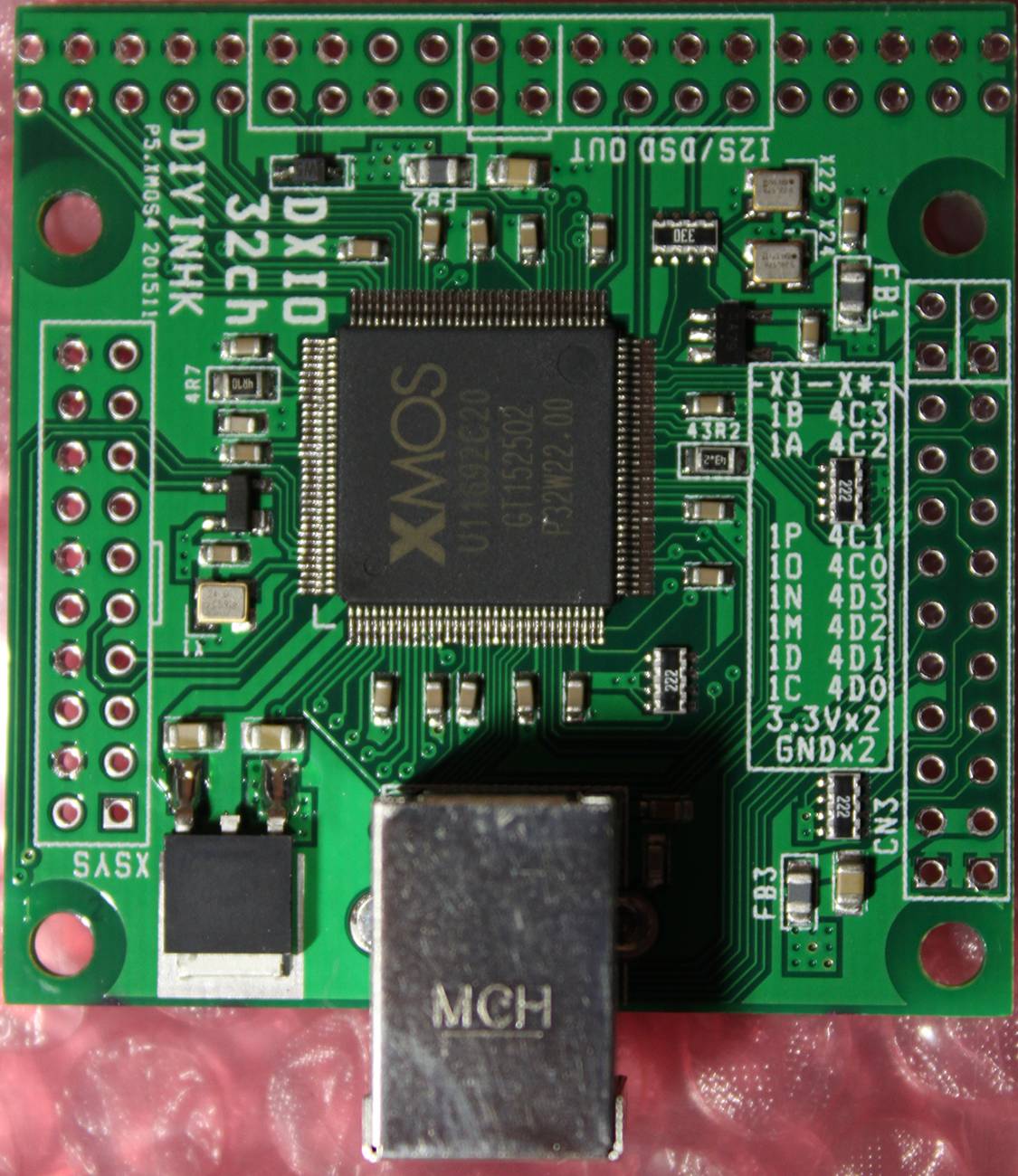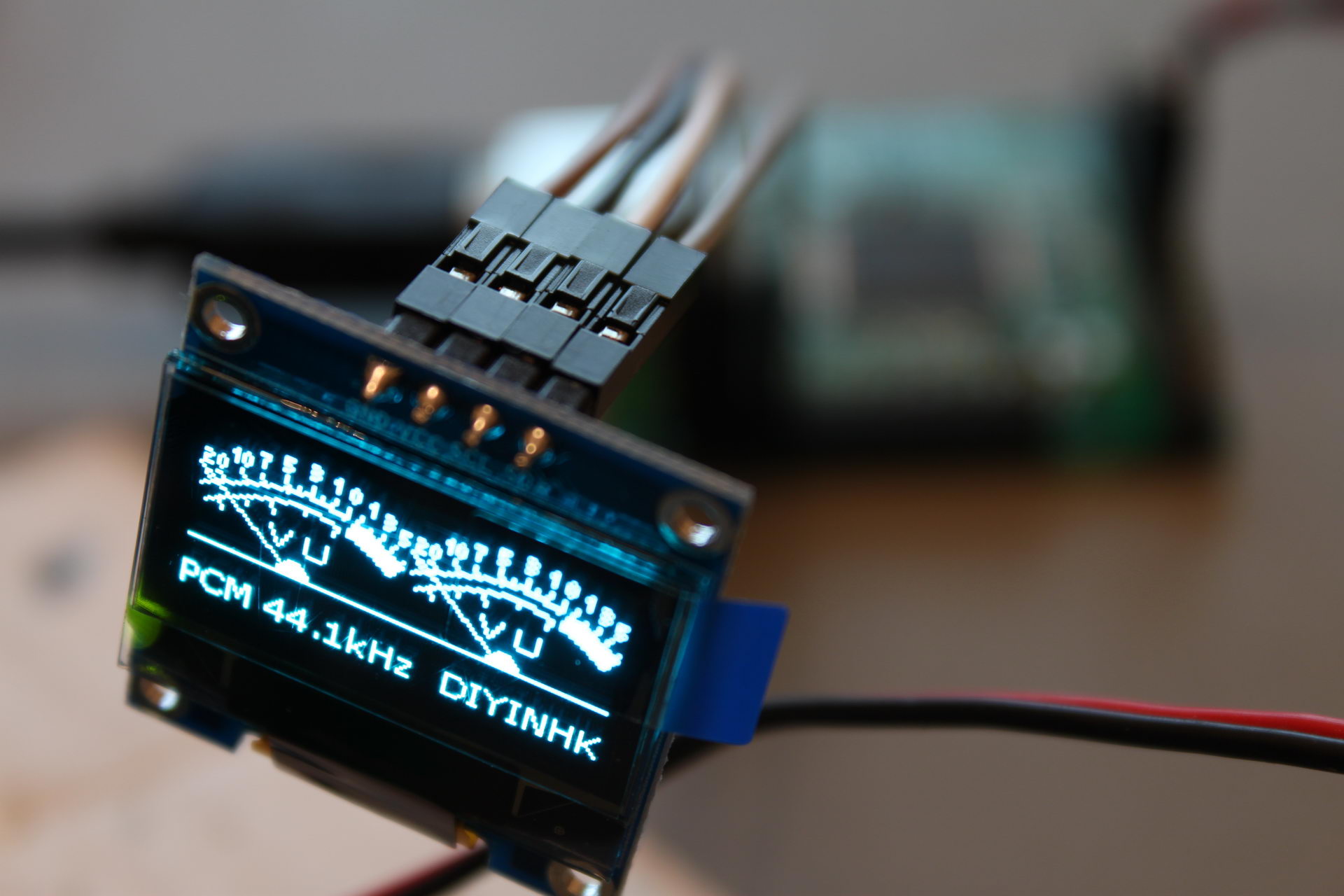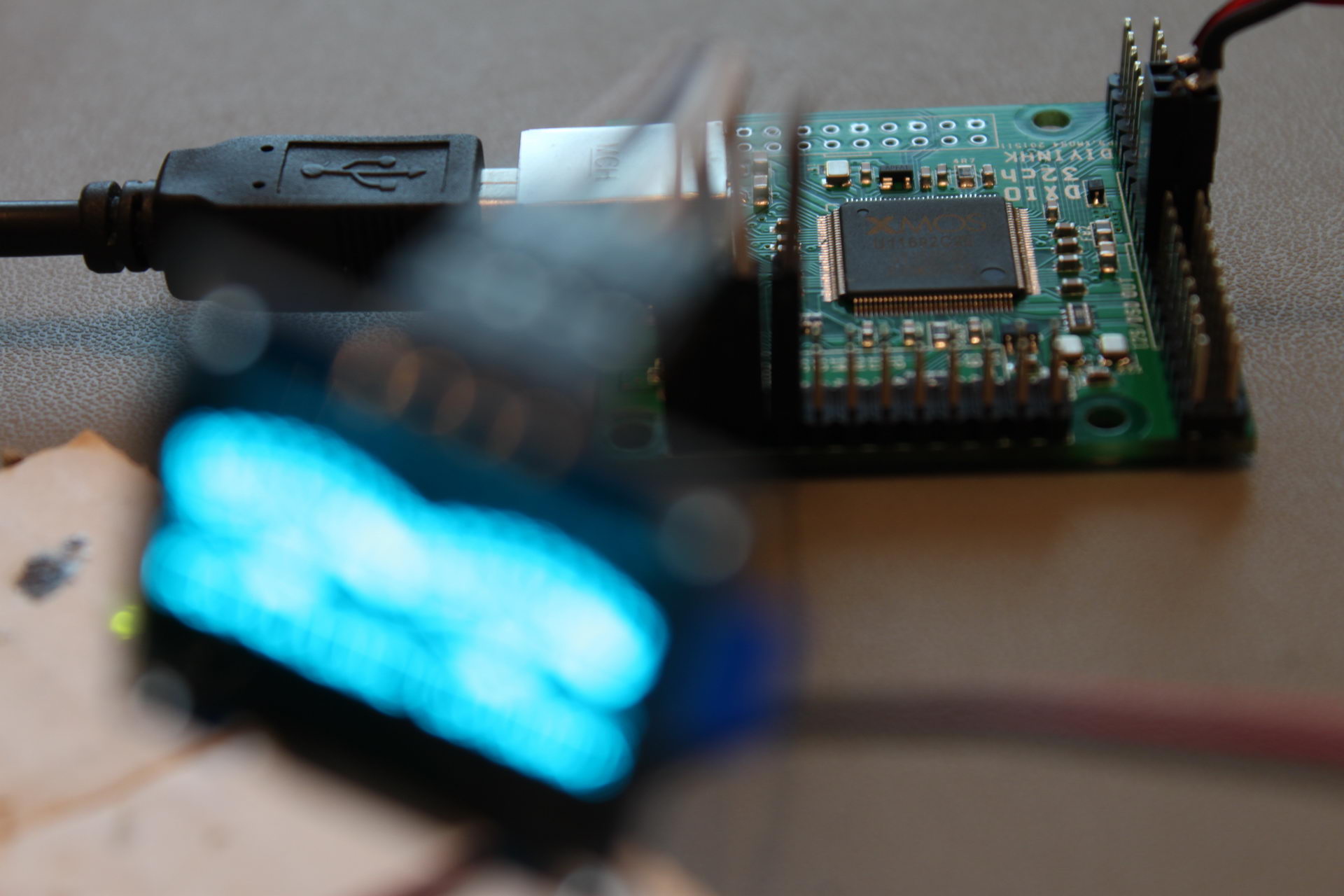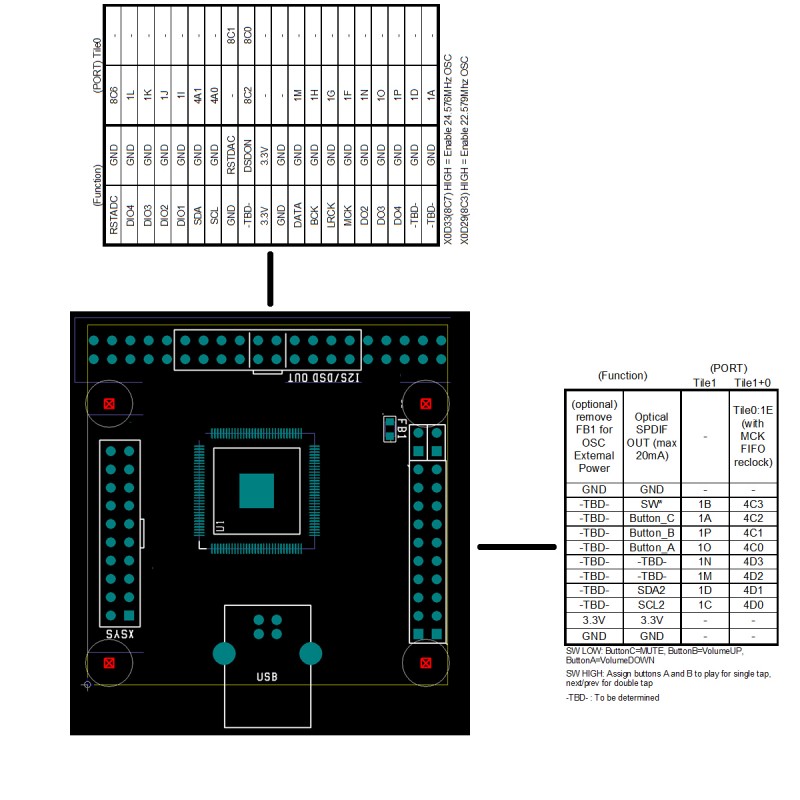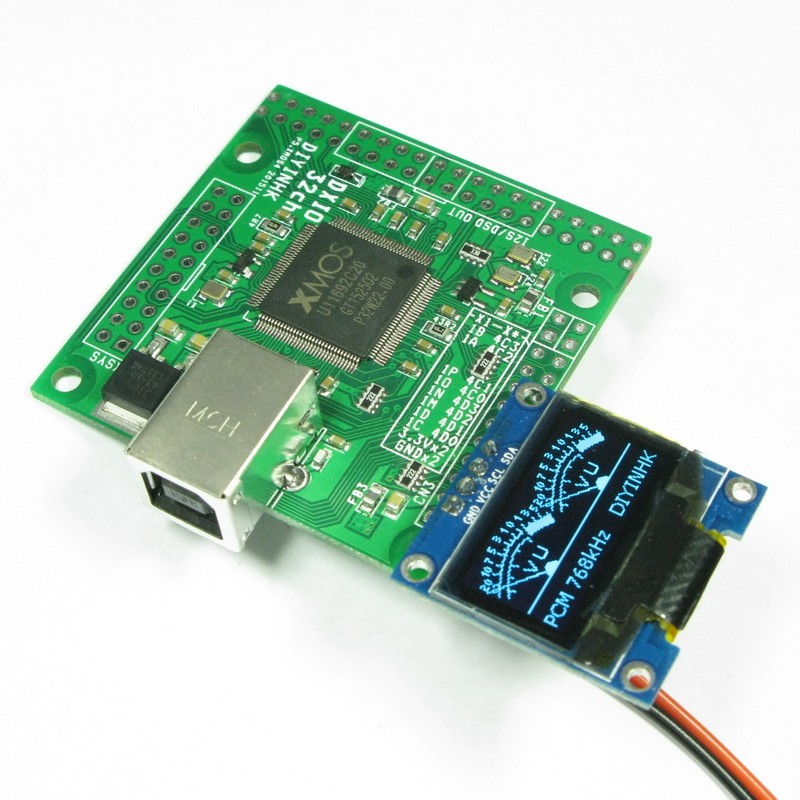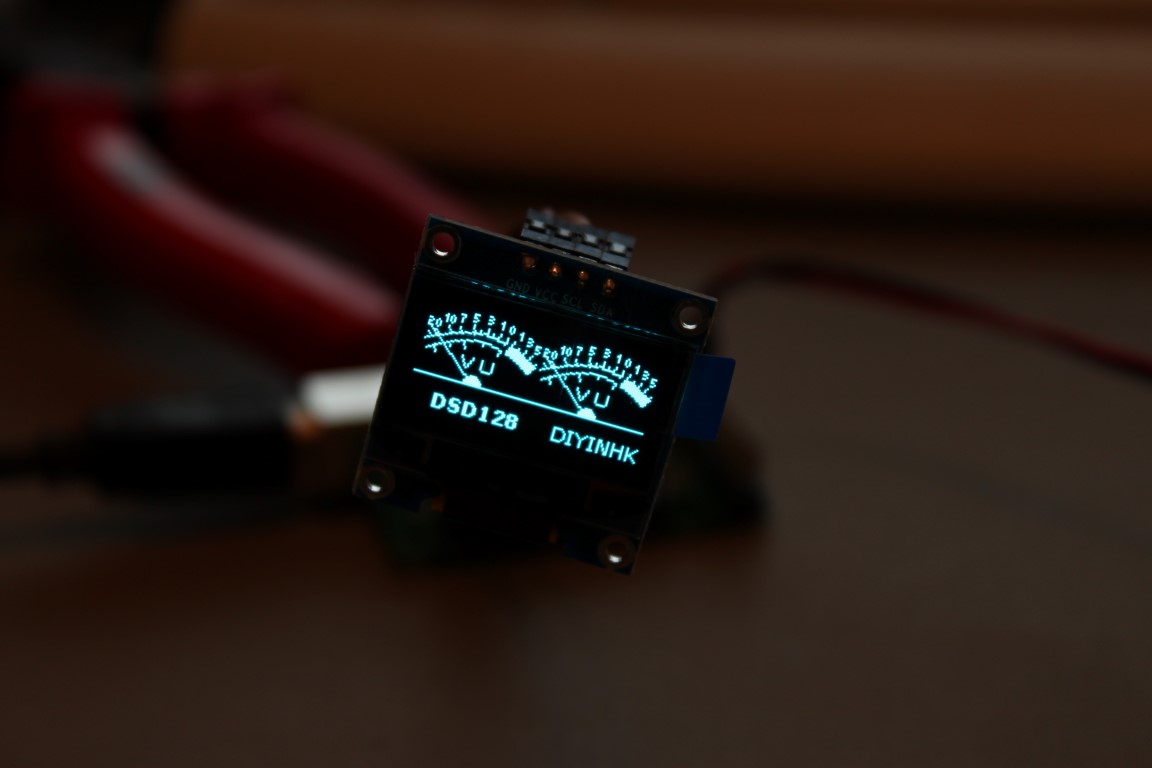About a month ago DIYINHK released a USB to I2S interface board based on the brand new and all-powerful XMOS xCORE-200 chip.
The specific chip used by DIYINHK is the middle-of-the-line XU216-512 which corresponds to some pretty serious horsepower: 16 logical cores for a total of 2000 MIPS, 512KB SRAM, 2MB FLASH.
So, what can we do with all this horsepower you say? It’s simple. Tons of channels of high-resolution audio. Plus I2S inputs, besides the usual outputs. Plus DSD1024. Plus use a cool OLED display as a VU meter.
The board I bought came with the default firmware, which supports:
- 6 channel 384kHz I2S output
- 4 channel 384kHz I2S input
- spdif output
- OLED VU meter
- Volume up/down control button
Here is a video of it in action:
A maximum 32 channels can be supported with the right firmware (not provided by DIYINHK).
The board (a 4-layer design, btw) comes with three high quality NDK NZ2520SD Ultra low phase noise oscillators. There is provision for powering two of the oscillators externally, by removing a ferrite bead and applying power through one of the headers.
The board is not USB powered. It needs a relatively beefy 3.3V power supply, capable of providing a maximum of 800mA (even though a typical power consumption is in the neighborhood of 570mA). Beware, a weak power supply or an inadequate connector will cause to board to not power up.
It comes with a fully featured Thesycon driver for Windows. Linux & Mac OS don’t need a driver.
An interesting detail is that the Windows 10 driver that is available only supports stereo operation and no multichannel (v2.26). If you want multichannel you’ll have to go back to Windows 7 (v1.67) (or perhaps Linux or Mac OS, it isn’t clear..).
DIYINHK’s site says that the latest available driver is v2.26, but I did not find such a driver in their downloads section, so I emailed them about it. They sent me a link for an even newer driver, v3.20.
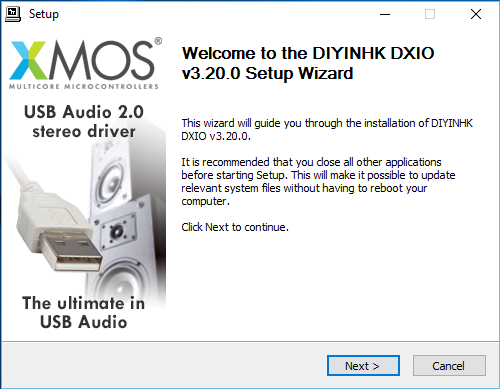
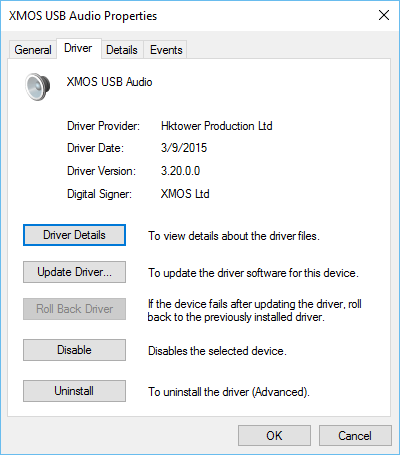
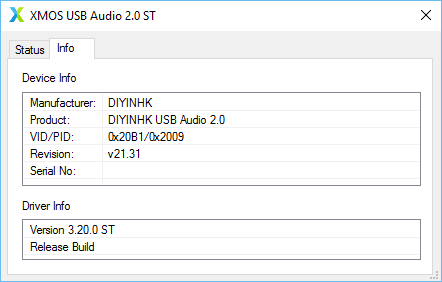
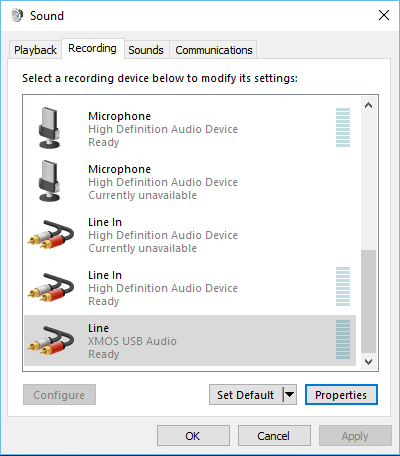
The board has a ton of exposed I/O, split into three 0.1″ headers. These are the pinouts, according to DIYINHK:
Now, if these pinouts look somewhat cryptic to you, you are not alone. I will try to clarify things a bit.
This is the most interesting header:
I have marked in red the power supply input. It is a good idea to use all of the pins for making the connections, since ~800mA is nothing to sneeze at.
The pins in green are the I2S outputs. For 2 channel operation you will need to connect the DATA, BCK & LRCK pins. The rest of the output channels should be available at pins DO2, DO3 and DO4. I say “should” because I haven’t tested them. I should repeat that multichannel operation with the provided driver is only possible at the moment with Windows 7 (and possibly Linux & Mac OS).
The pins in yellow are the I2S DATA inputs. For 2 channel operation you will need to connect the DIO1, BCK & LRCK pins. The rest of the input channels should be pins DIO2, DIO3 and DIO4. The same multichannel restrictions I mentioned above apply to the I2S inputs.
The OLED screen is connected to one of the side headers, like this:
The left header is the XSYS connector for uploading firmware to the XMOS.
Next up: connecting it to my PCM4222 EVM ADC board.

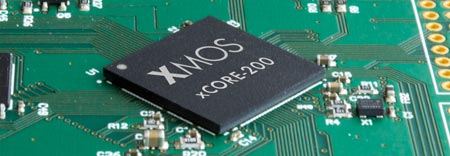
![cXU216[1]](https://www.dimdim.gr/wp-content/uploads/2016/01/cXU2161.png)
